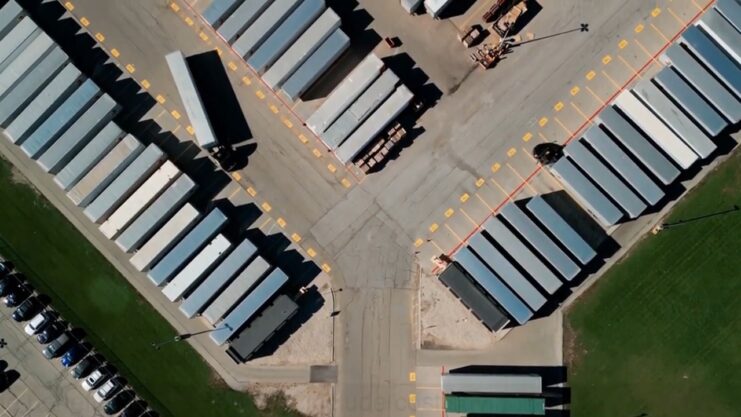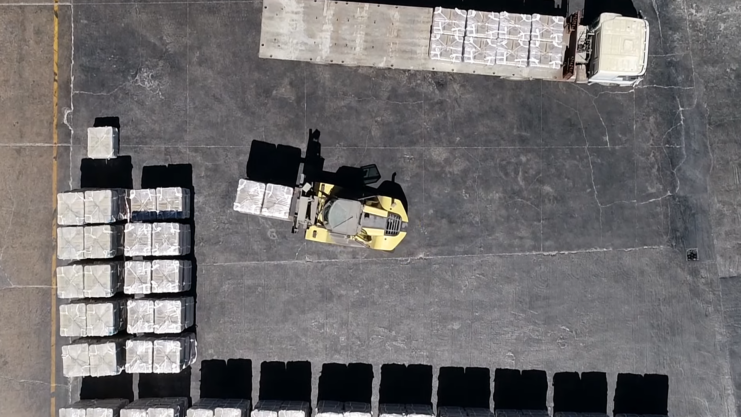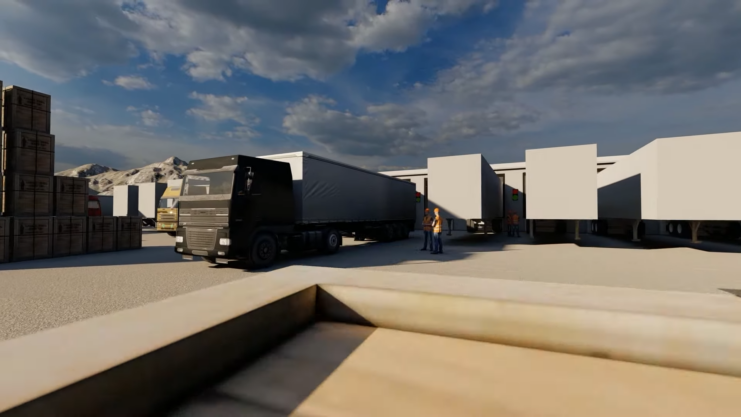Less-than-truckload shipping, commonly referred to as LTL, is a popular freight transport solution for businesses that need to ship mid-sized loads between 150-15,000 lbs. It strikes an economical balance between small parcel carriers like FedEx and UPS and hiring a full 48-53 foot trailer, which can be overkill for many shipments.
With LTL, multiple shippers have their palletized cargo consolidated onto a single partial-load truck traveling common routes across North America. Each shipper takes up allocated floor space and pays a prorated share of the total freight cost based on weight, distance, and other factors.
This shared distribution model allows companies to ship freight at much lower rates compared to the sole use of an entire trailer, ranging around $2,000 per trip. Small and mid-sized businesses alike rely on the economies of scale afforded by LTL trucking to keep inventory, machinery parts, trade show booths, raw materials, and other mid-bulk items moving efficiently across their supply chain.
Shippers can choose between national LTL carriers like Ease Logistics, with the most expansive logistics networks for reliable coast-to-coast transit as well as regional niche carriers that focus on specific high-density lanes. LTL lowers the barriers to accessing reliable freight transport, allowing even small businesses to scale distribution in tandem with operations growth.
For startups and mid-market shippers doing high-volume replenishment or fulfillment, LTL represents an indispensable transportation solution that keeps revenues flowing while controlling freight expenses.
Let’s explore the main aspects of less-than-truckload shipping critical for operations managers to understand when evaluating if LTL works for their freight profile including service options, pricing models, pros and cons to consider, and ideal use cases.
What Qualifies as LTL Shipping

Deciphering LTL requirements may seem complicated at first, but LTLs typically refer to mid-sized cargo from about 500 to around 15,000 lbs. Most carriers require shipments to meet several criteria to qualify for transport at LTL rates:
- Size – The total floor space or “linear feet” the freight occupies on the trailer is a major determinant of what qualifies for LTL. This is why pallets are used to consolidate and uniformly stack goods. To qualify for shipment, linear space should not exceed 28 feet, already set by the dimensions of a standard loading pallet space. Put another way, the length and width added together should not exceed 11 feet to fit within a single pallet spot.
- Weight – While LTL encompasses a wide range of goods in and around a pallet space, typical weight limits fall between 150 lbs at the low end to around 15,000 lbs maximum at the high end. However, constraints of lift gate requirements for final delivery may impose tighter weight restrictions, such as 1500 lbs for residential deliveries. Essentially, anything heavier than a couple of pallets worth of goods to about half a full trailer load.
- Palletized Freight – Beyond weight and size, freight must be properly packaged and secured on standard-size pallets measuring roughly four feet by four feet and be stackable in the trailer. This ensures stable load balancing and quick transfer on and off the truck. LTL will not haul loose bulk items or anything that requires special blocking and bracing during transit. Hazardous goods are also prohibited, with exceptions for limited quantity consumer commodity shipments under specific regulatory exemptions.
- Class 100 Rating – LTL carriers assign a “class” rating to all freight they handle which determines the applicable linehaul rate at booking. Class is based on NMFC freight classifications which factor in shipment density, stowability, ease of handling, and liability. Most standard pallet goods fall under Class 100, which encompasses the majority of daily consumer goods like appliances, furniture, electronics, and other general commodities. Rates go up incrementally for freight needing special handling, protection, or refrigeration during transit falling into higher freight classes.
In summary, if your shipment weighs less than 15,000 lbs, fits on 1-6 standard 4’x4′ pallets loaded no more than 8 feet high, and falls under freight Class 100 – it will likely qualify and prove cost-effective to ship via less-than-truckload.
Advantages of LTL Transportation

Less-than-truckload offers several benefits making it an attractive shipping solution, including:
- Lower Costs – Each shipper splits the overall transportation charge, so per entity fee is less than a full truckload. It saves costs when the shipment is too large for a small parcel but doesn’t require an entire trailer.
- Frequent Departures – LTL trucking companies make scheduled, daily pickups/deliveries across major lanes, enabling consistent transit times.
- Limited Handling – Once loaded, LTL freight stays on one truck through to the destination, avoiding risks associated with longer relay routes. Minimizes chances of warehouse storage, misplaced pallets, or outdoor yard storage during transit.
- Security – Most LTL carriers offer cargo insurance to reimburse damages/losses though restrictions apply. Many also provide photos of securely loaded freight. Real-time tracking alerts customers if a shipment gets delayed allowing them time to plan accordingly.
Downsides to Consider

While LTL affords smaller shippers access to commercial distribution pipelines across North America, there are some drawbacks including:
- Multiple Stops – Delivery times can be delayed if the truck makes frequent stops at terminals when picking up/dropping off other freight along the route. Your shipment gets handled each time the truck is loaded/unloaded.
- Space Limitations – You get allocated floor space but no control over what gets stacked directly on or around your freight. Improper load balancing or heavy shipments parked on top can damage items on bottom pallets.
- Additional Fees – There are often additional fees for services like lift gate delivery, residential delivery, or oversized shipments that take up greater than standard floor space allotment.
When to Use LTL Transport

- Produce, hardware, auto parts distributors – frequent replenishment shipments of 100-1000 lbs
- Tradeshow exhibits, event equipment, noise-controlled freight
- Machinery, manufacturing parts requiring covered transport in 53 ft trailers
- Hazardous chemicals needing placarded transport under limited quantity exemptions
For shipments with more precise handling requirements, temperature controls, or exact delivery windows – consider hiring an exclusive-use freight truck to eliminate risks posed by shared transport.
LTL carriers specialize in safely transporting mid-sized sensitive freight across major shipping lanes in North America. When used judiciously for appropriate loads, LTL can provide secure and economical distribution tailored to the needs of small and mid-sized shippers.
Additionally, understanding what is in a shipping container becomes crucial for optimizing the logistics process and ensuring the safe and efficient delivery of goods.

